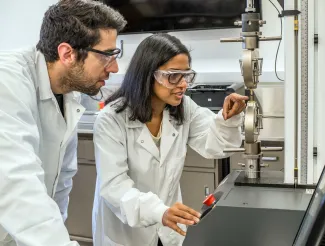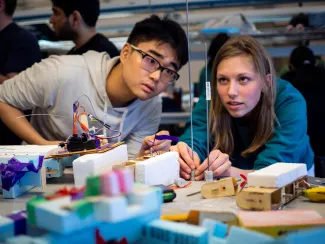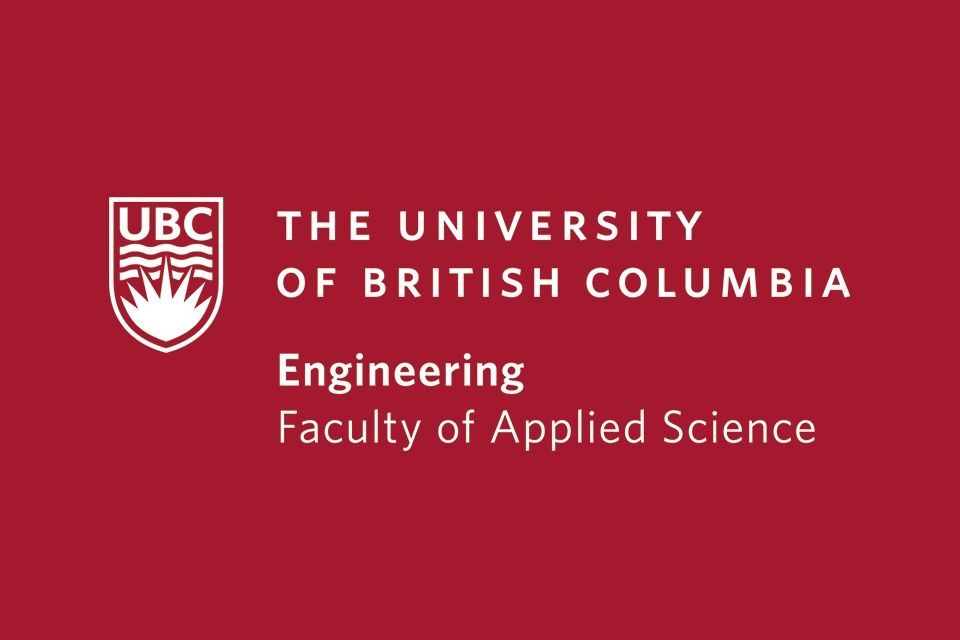“One of the themes throughout my research is the idea of resilience.” Dr. Adam Clare is investigating how manufacturing technologies can help build a more sustainable future.

- Program:
- Campus: Vancouver
Education: PhD (University of Liverpool), MEng (University of Liverpool)
What led you to engineering, and to mechanical engineering in particular?
When I was in secondary school, math and physics almost seemed like an endless video game to me, where everything just got more and more interesting the deeper you got into it. Along with liking these subjects, I realized I wanted my career to have an impact on people.
Engineering was a technical field where I could have a direct way to help others.
As for being interested in mechanical engineering, some of this may have come from my family history. My uncle owned a small company that made concrete products, and things always needed fixing, whether that was the concrete mixer or a leaking fuel tank. So from about the age of 13 I spent a lot of weekends in overalls repairing equipment. That got me interested in how things are designed, and I realized you could go to university to learn how to design products and work on complex engineering challenges.
Why is this research important?
One of the themes throughout my research is the idea of resilience.
In my work on democratization of design, for example, it’s finding ways to help individuals and communities be in a better position to respond to technical challenges. In my work on stochastic design, it’s having an impact by creating structures and engineering systems that are more resilient to damage.
What undergraduate courses do you teach?
I’m currently teaching a course on design for additive manufacturing. Although students learn how to do some interesting projects with 3D printing, that’s not the true objective of the course. I’m teaching students to design tools that will empower non-technical people to do high level 3D printing so they can solve problems for themselves.
Why should students choose UBC?
I moved from England to Canada to work at UBC because of the creativity that I see here.
To solve problems in mechanical engineering at the highest level, you need to be creative.
Being surrounded by others who see the word through different eyes, who approach problems differently and who value those differences is very exciting. Students who come to UBC to study engineering benefit from this environment.









